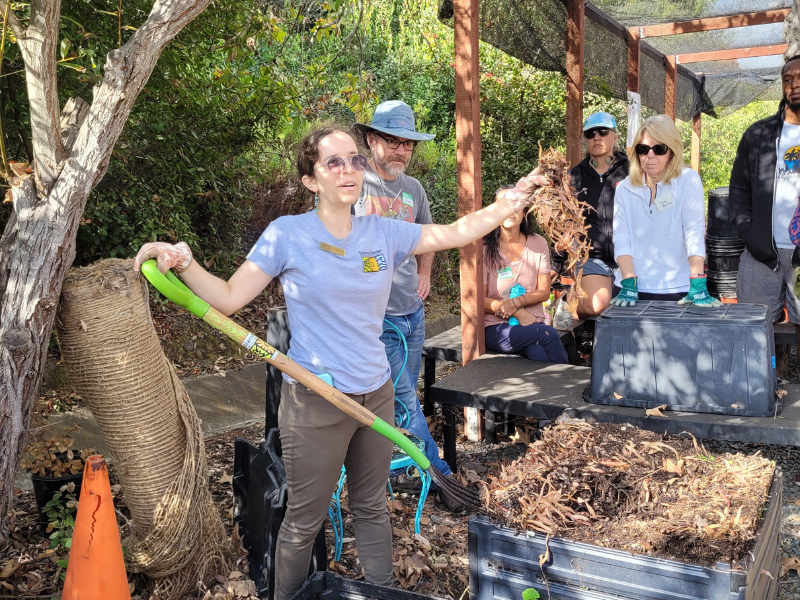Which Composting Method is Right for You?

Have you ever wondered “what is the best composting method for me?” There are many options for how to personally deal with food waste and a lot of different factors to consider.
Not everyone is ready to jump in headfirst with a pile or a worm bin (but if you are more power to you!) Read on to learn more about your chosen method of composting!
Compost Pile
A pile is the most basic and traditional version of composting. It involves work to turn the material and requires a decent amount of space, but it is also very cost-effective.
Compost Bin
A bin is the most similar option to the pile, providing a container to encase compost and a neater aesthetic.
Compost Tumbler
A tumbler is a slightly more expensive alternative to the bin, but it is significantly easier to turn and maintain than either of the options above.
Vermicomposting (Using Worm Bins)
Worm bins create the most nutritionally dense product for your garden or yard. They can be relatively inexpensive to maintain, and some people feel that maintaining a worm bin is like taking care of an elevated houseplant or a less difficult pet. The worms are low maintenance once you learn what few foods are on the “not allowed” list to add to your bin. While not everyone loves worms and creepy crawlies, if you are a fan, this method can be a really rewarding composting method (especially for families with kids!) because you can care for the same clan of worms for many years as they help break down your food waste.
Bokashi Fermentation
Bokashi is not technically composting; it is a fermentation method. This fermentation process can handle the largest variety of foods, including meats and cheeses (go ahead and throw your old pizza or bones from dinner in a bokashi bucket!) The bokashi method is anaerobic (i.e. without oxygen) and requires a sealed container keeping smells to a minimum. Once the bokashi is fermented it can be added to outdoor compost or simply buried in the ground to develop into nutritious fertilized soil.
Food Dehydraters & Grinders
Food Cycler and Lomi are just two of the brands that create in-home electric “compost creators”. These devices take food waste, dehydrate it, and grind it to make an easy to add to soil “compost”. This product is perfect for those who do not like dealing with food waste in any form or are not interested in waiting to get nutrient-rich materials to add to their garden. These products are generally costly compared to the other options and will not have microbial activity that is necessary for completed compost, so the finished product will need to be cured in soil to gain the necessary microbes that break down the waste and provide nutrients to the soil.
Other Options for Reducing Food Waste
Additionally, many cities in San Diego offer curbside organic waste pick up; it is a great option for people who do not want to process their own food waste. Check with your city to see if they have a composting program that would allow you to add food waste to your green bins.
Lastly, donating compost can be a great option for people who do not want to process their own food waste and do not have green bins. This option is also city-specific and will require a little research but finding a local place that will take your compost can be a great way to be engaged with your local composting community.
So, are you ready to start composting?
This article was written by Rachel Leacock, Master Composter Course Graduate. If you want to learn more about their art and composting in general, follow along @sometimescomics on Instagram. They are creating a series learning about all aspects of composting.
